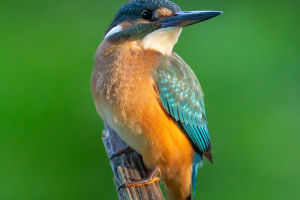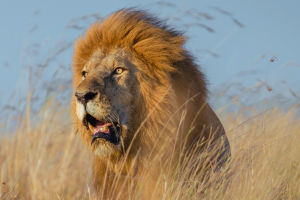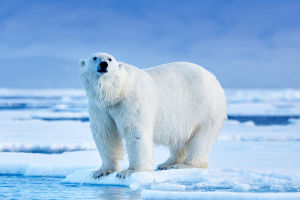In this colorful world, penguins attract many people’s attention with their unique appearance and adorable personalities. Although they live in the Southern Hemisphere, especially in Antarctica, there are many species of penguins, each with its unique characteristics and habits.
Here are six famous penguin species, each showcasing the diversity and charm of the penguin family.
1. Emperor Penguin
The Emperor Penguin is the largest species of penguin, with adult Emperor Penguins reaching heights of up to 1.2 meters and weighing as much as 40 kilograms. Their feathers are primarily black and white, with a yellow belly that creates a striking contrast.
Emperor Penguins are known for their unique breeding behavior. They mate during the harsh winter months, and the male penguins are responsible for keeping the eggs warm and caring for them, even enduring weeks of freezing temperatures. The cooperative behavior of Emperor Penguins is also fascinating; thousands of them gather together to form a massive, warm "penguin huddle" to withstand the cold.
2. Adélie Penguin
The Adélie Penguin is a medium-sized penguin, standing about 70 centimeters tall and weighing between 3 to 6 kilograms. They are loved for their classic black-and-white color scheme and rounded appearance.
Adélie Penguins primarily inhabit the ice shelves along the coast of Antarctica, with their breeding season typically occurring from October to February. They feed on small fish, krill, and other marine invertebrates. Adélie Penguins are known for their lively and playful nature, often seen sliding and jumping on the ice, making them popular among tourists.
3. Gentoo Penguin
The Gentoo Penguin is the fastest, capable of reaching speeds of up to 36 kilometers per hour in the water. They are characterized by distinct white markings on their heads and orange beaks.
Gentoo Penguins are mainly found on the Antarctic Peninsula and surrounding islands, standing about 75 centimeters tall and weighing up to 8 kilograms. During the breeding season, they build nests made of stones and feed on fish and krill. Gentoo Penguins are very social, often living in large groups and forming large colonies during the breeding season, full of energy and vitality.
4. Little Blue Penguin
The Little Blue Penguin, also known as the Fairy Penguin, is the smallest penguin species in the world, standing only about 30 centimeters tall and weighing around 1 kilogram. They have blue feathers and a small, adorable shape, often regarded as the most attractive type of penguin.
Little Blue Penguins inhabit the coastlines of New Zealand and Australia, preferring to nest in rocks and caves. They return to their nests at dusk, creating a spectacular “homecoming” scene. Little Blue Penguins feed on small fish and crustaceans, charming visitors with their lively behavior and delightful appearance.
5. King Penguin
The King Penguin is the second largest penguin species, standing about 85 centimeters tall and weighing up to 15 kilograms. Their feathers are vividly colored, with bright orange and yellow patches on their chests.
King Penguins are primarily found on islands around Antarctica and feed on fish and krill. Compared to other penguins, King Penguins have a longer breeding cycle, typically taking 14 months to hatch their chicks.
17 Penguin Species in One Video
Video by Richard Sidey
6. Magellanic Penguin
The Magellanic Penguin is mainly distributed along the coasts of South America, particularly in Argentina, Chile, and the Falkland Islands. They stand about 70 centimeters tall and weigh between 4 to 5 kilograms.
Magellanic Penguins have gray-black feathers with white patches on their chests and two distinct white lines on their faces. They feed on small fish, squid, and other marine organisms. Magellanic Penguins usually nest between beaches and rocks and are social animals, forming large colonies during the breeding season, showcasing a strong sense of family.
The diversity of these penguins highlights the wonders of nature. Each species has adapted to its environment in unique ways, surviving and reproducing. Whether it's the massive Emperor Penguin or the tiny Little Blue Penguin, they are all indispensable parts of the ecosystem and symbolize humanity’s exploration of Antarctica. By understanding these adorable creatures, we not only appreciate their beauty but also value the uniqueness of every species on this planet.


